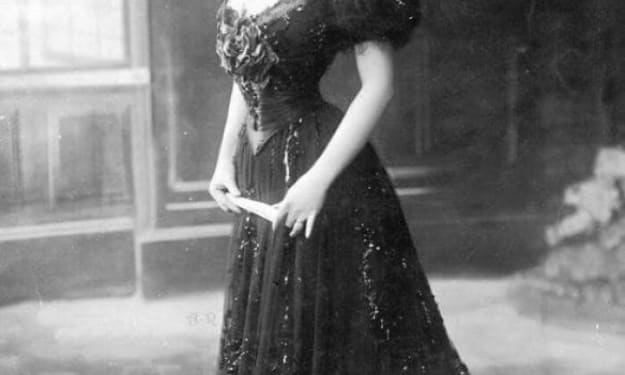
The “Angel of Prisons”, she is best known for her work on behalf of women and children in Newgate prison in London. Her work on ‘training nurses’ started twenty years before the Nightingale School of Nursing was established. She was also married and a mother of eleven children.
She was Elizabeth Fry.
Elizabeth was born on 21st May, 1780, into a large, prominent Quaker family. Her father was John Gurney who worked as a banker, and her mother was Catherine, a member of the Barclay family (the family who founded Barclays Bank). Elizabeth grew up at Earlham Hall, the family home, and had a ‘charmed’ life until her mother died when she was twelve years of age. Being one of the oldest girls amongst her siblings, Elizabeth was partly responsible for caring for and educating the younger brothers and sisters. One of her sisters, Louisa Gurney Hoare, was a writer on education.
From an early age, Elizabeth felt’ called by Christ’, and she became inspired when listening to the preaching of American Quaker William Savery. Elizabeth started on her ‘mission’ at the young age of seventeen, committing herself to doing good works.
“How much I wished, almost prayed, I may one day be a perfect sacrifice, wholly given up to the service of God” — Elizabeth wrote in her diary.
Joseph Fry was a banker and a cousin of the Bristol Fry family (well-known for their confectionery business), as well as a Quaker himself. Elizabeth met Joseph when she was twenty years of age, and the young couple married on 19th August, 1800. They first moved to St.Mildred’s Court, London, but then moved about due to Joseph’s business and its financial status.
Elizabeth’s first visit to a prison was in early 1813. A fellow Quaker, who had visited Newgate prison, told her about the dreadful living conditions and the awful ‘state’ the female prisoners had to contend with. Wanting to see it for herself, Elizabeth visited Newgate prison with Anna Buxton, (who was the sister of her brother-in-law, the abolitionist Thomas Fowell Buxton).
Horrified by what she saw, Elizabeth returned the next day with ‘provisions’ for the poor women and children that were incarcerated in Newgate prison. She took clothes, food and other things to help them because most of the women had very few, if any, possessions including clothes.
The prison itself was full to capacity, with men and women camped in the same cells. The ‘wardens’ were all men and harsh, making the women completely ‘at their mercy’. Hardened criminals were put in the same cells as those still awaiting trial for the smallest of crimes. The women lived in constant chaos and fear, and their children had nowhere else to go.
Having been brought up in a ‘privileged’ way, “the harsh realities of the prison world would have been a startling sight for Elizabeth”.
In 1816, Elizabeth set about her charity work, focusing on Newgate prison, especially the women’s side. A school was set up inside the prison for the children who had come in with their mothers, and Elizabeth focused on providing money for the school. She felt that educating these children would at least give them a ‘fighting’ chance in life.
The following year, in 1817, she founded the “Association for the Reformation of the Female Prisoners in Newgate”. This provided materials for the women prisoners so that they could learn to sew patchwork, which had a calming effect on them, and which helped them to develop skills which would help them once they were released.
This practical approach was copied in other prisons which led to the ‘creation’ of the British Ladies’ Society for Promoting the Reformation of Female Prisoners in 1821.
Elizabeth believed in “reform” rather than punishment, and so everything that she did to help these women prisoners was to encourage them to change their lives into becoming good people. With this in mind, Elizabeth put her back into her beliefs and she encouraged this reform by ‘lobbying with parliament, campaigning and doing charity work’.
One of the first things that she worked on was the separation of men and women within the prison cells, and female guards for the women inmates. Also, Elizabeth campaigned to have the prisoner’s ‘housed’ according to their crimes.
Practical advice was given on matters of hygiene, and religious instruction from the Bible was offered. Needlework was thought to give the women prisoners practical help, a useful skill to have for when they left prison. Comfort and a listening ear was given to these troubled women in their most difficult moments.
Of course, Elizabeth experienced a great deal of ‘well-meaning’ hostility during all of this time. Individuals would continuously warn her of the ‘perils’ of trying to help these fallen women. However, Elizabeth took all of this ‘experience’ in her stride. This “Angel” would not be stopped by anyone!
Something we no longer see today is the transportation of prisoners to the other side of the world. This was deemed a necessary evil but it was a cruel way of treating the prisoners as both men and women were ‘paraded’ through the streets, on their way to the transportation ships, and the townspeople would pelt these prisoners with stones and anything else they could throw. Elizabeth campaigned for decent transport which was covered to give the prisoners some dignity and protection. She also visited these transport ships, and due to Elizabeth’s hard work in this area, the transportation of prisoners was abolished in 1837.
Queen Victoria, who herself was always very interested in helping those less fortunate than herself, gave Elizabeth her full support, greatly admiring this young woman at a time when women were supposed to be completely submissive to men.
1818 was a marked year for Elizabeth Fry because she became the first woman to provide evidence to a House of Commons committee about prison conditions, which led to the Prison reform Act of 1823.
As well as her work in the prisons, Elizabeth’s humanitarian efforts continued to show in other ways. She wanted to improve the lives of the homeless by opening a shelter in London and several soup kitchens, especially after she saw a young child, who had been out in the freezing winter, not survived the night and was frozen to death.
Elizabeth’s desire to help other women also extended to those outside of the prison system, namely fallen women or prostitutes. She provided them with accommodation and showed them opportunities to find different kinds of employment.
Elizabeth also ‘tackled’ the mental asylums, by proposing reforms for better living conditions for those who were ill and better working conditions and training for the nurses.
In the 1840’s, a nursing school was set up by Elizabeth to improve the education and training of nurses, and to raise the standards of nursing. This school inspired Florence Nightingale as she went about her work in the field of nursing.
Alongside many of her Quaker friends, Elizabeth supported and worked for the abolition of slavery.
Her ‘ground-breaking works’ inspired the new generation to continue these “good works” to improve the lives of their fellow humans.
After 65 years of putting her soul into these charitable works, and of being a wife and mother of eleven children, Elizabeth Fry died of a stroke whilst staying in Ramsgate in October 1845. She was laid to rest at the Quaker burial grounds in North Street, Barking, which is opposite the friends Meeting House, and over a thousand people attended her memorial. In the early 2000’s, Elizabeth Fry’s image was put on the five pound note, recognising her hard work during her lifetime.
“First, let me make it clear that I am not attempting to persuade women to forsake their homes. On the other hand, I urge women to first fulfill their duties in their homes and then by making the best use of time and wise division of labour take out time to go and visit the poor, helpless, ignorant women in prisons, hospitals, and mental hospitals. The helpless, the ignorant, the afflicted or the depraved women need your compassion and help” — Elizabeth Fry.
About the Creator
Ruth Elizabeth Stiff
I love all things Earthy and Self-Help
History is one of my favourite subjects and I love to write short fiction
Research is so interesting for me too
Enjoyed the story? Support the Creator.
Subscribe for free to receive all their stories in your feed. You could also pledge your support or give them a one-off tip, letting them know you appreciate their work.






Comments
There are no comments for this story
Be the first to respond and start the conversation.